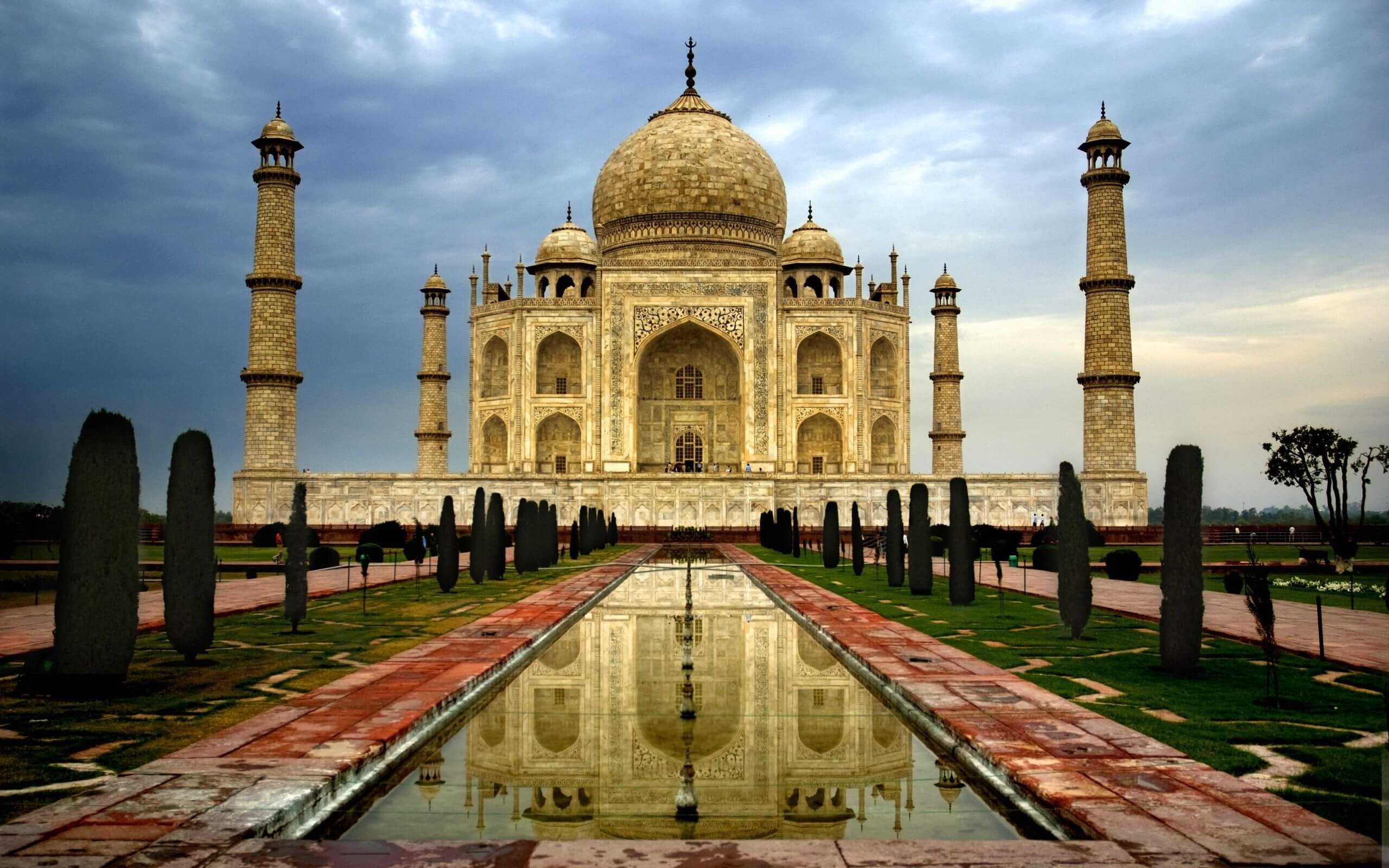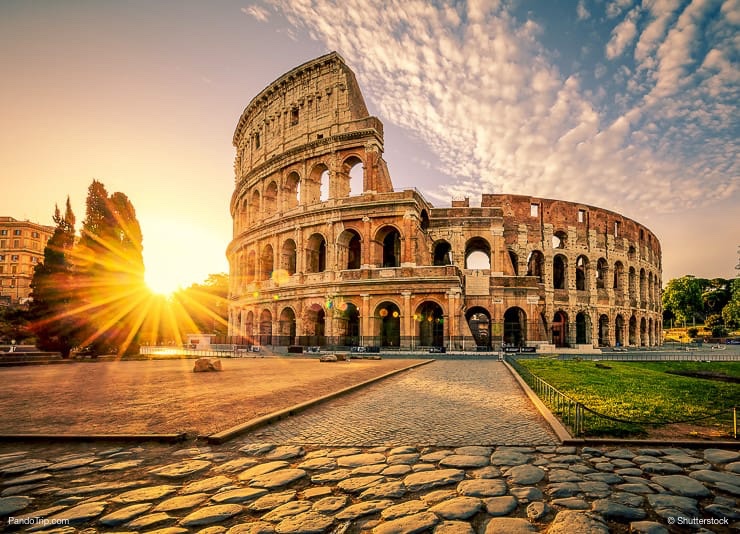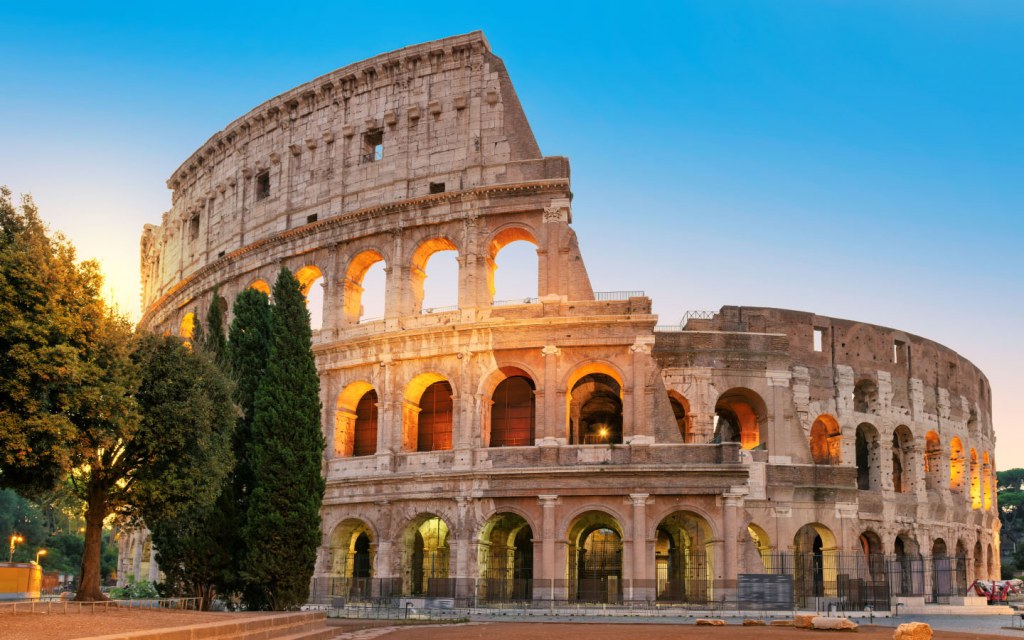10 Must-See Historical Landmarks Around the World – Ever dreamt of standing before the Great Wall, feeling the ancient stones of Machu Picchu beneath your feet, or gazing up at the majestic Pyramids of Giza? This isn’t just a bucket list; it’s a journey through time, a testament to human ingenuity and cultural richness. We’ve curated a list of ten landmarks that transcend mere sightseeing, offering glimpses into pivotal moments in history and the enduring power of human civilization.
Get ready for an epic adventure!
From the awe-inspiring architecture to the captivating stories etched into their very foundations, these landmarks represent more than just stones and structures. They are living history, whispering tales of empires risen and fallen, of innovations that shaped our world, and of cultures that continue to inspire. Prepare to be amazed by the sheer scale, the intricate detail, and the profound impact these sites have had – and continue to have – on the global stage.
Landmark Descriptions

Exploring the world’s historical landmarks offers a captivating journey through time, revealing the ingenuity, struggles, and triumphs of past civilizations. These structures aren’t just stones and mortar; they are living testaments to human history, reflecting cultural values, architectural advancements, and significant historical events. The following tables detail some of the most remarkable landmarks, offering a glimpse into their rich past and enduring importance.
First Four Landmarks
| Landmark Name | Location | Brief History | Significance |
|---|---|---|---|
| The Great Pyramid of Giza | Giza, Egypt | Built over 4,500 years ago during the Fourth Dynasty of the Old Kingdom, it served as the tomb of Pharaoh Khufu. Construction involved meticulous planning and the mobilization of a vast workforce. | Represents the pinnacle of ancient Egyptian engineering and architectural prowess. It stands as a symbol of the pharaoh’s power and the beliefs surrounding the afterlife. It is also a testament to the organizational capabilities of ancient civilizations. |
| The Colosseum | Rome, Italy | Constructed between 70 and 80 AD, this amphitheatre hosted gladiatorial contests, public spectacles, and mock sea battles. It underwent several renovations and expansions throughout its history. | A symbol of the Roman Empire’s power and grandeur, showcasing Roman engineering and architectural achievements. It offers insight into Roman entertainment, social structures, and the lives of gladiators. |
| The Great Wall of China | China | Construction spanned centuries, with different sections built and rebuilt over approximately 2,000 years. It was intended to defend against invaders and protect trade routes. | A monumental symbol of China’s strength, resilience, and ingenuity. It represents the vast scale of ancient Chinese engineering projects and the country’s long history of defense strategies. |
| Machu Picchu | Peru | Built in the 15th century by the Inca civilization, this mountaintop city served as a royal estate and religious center. It remained hidden from the outside world for centuries after the Spanish conquest. | A testament to the advanced engineering and architectural skills of the Inca. It is a remarkable example of integration with the natural environment and holds immense cultural and historical significance for Peru and the Inca civilization. |
Next Four Landmarks
| Landmark Name | Location | Brief History | Significance |
|---|---|---|---|
| The Taj Mahal | Agra, India | Commissioned in the 17th century by Mughal emperor Shah Jahan to serve as a mausoleum for his wife, Mumtaz Mahal. Its construction involved skilled artisans and intricate craftsmanship. | A breathtaking example of Mughal architecture, showcasing a blend of Persian, Ottoman, Turkish, and Indian styles. It is a symbol of love and a masterpiece of artistry and design. |
| Angkor Wat | Cambodia | Built in the 12th century during the Khmer Empire, it originally served as a Hindu temple dedicated to the god Vishnu, later transitioning to a Buddhist temple. | A magnificent example of Khmer architecture and a significant religious site. It represents the height of the Khmer Empire’s power and artistic achievements. |
| The Eiffel Tower | Paris, France | Built in 1889 as the centerpiece of the World’s Fair, it was initially met with mixed reactions but quickly became an iconic symbol of Paris and France. | A landmark of modern engineering and a global icon. It represents a significant moment in the history of structural engineering and its impact on architecture. |
| The Statue of Liberty | New York City, USA | A gift from France to the United States, it was dedicated in 1886 and symbolizes freedom and democracy. | A powerful symbol of freedom, democracy, and the welcoming spirit of the United States. It represents the ideals of liberty and opportunity. |
Final Two Landmarks
| Landmark Name | Location | Brief History | Significance |
|---|---|---|---|
| Stonehenge | Wiltshire, England | Construction spanned centuries, starting around 3000 BC. Its purpose remains debated, but theories include astronomical alignment, religious significance, and ceremonial use. | A prehistoric monument of immense mystery and fascination. It represents the ingenuity and advanced knowledge of Neolithic and Bronze Age societies. Its enduring mystery continues to fuel scientific and historical inquiry. |
| The Pyramids of Teotihuacan | Teotihuacan, Mexico | Built between 100 BC and 750 AD by the Teotihuacan civilization, the pyramids served as religious centers and possibly tombs for important figures. | Significant examples of Mesoamerican architecture and city planning. They represent the advanced societal organization and cultural achievements of the Teotihuacan civilization, a culture that exerted significant influence in pre-Columbian Mesoamerica. |
Detailed Exploration of Selected Landmarks

The Great Wall of China and the Pyramids of Giza stand as testaments to human ingenuity and ambition, built millennia apart yet sharing a common thread: the desire to leave an enduring mark on the world. Their construction methods, cultural significance, and lasting impact offer fascinating insights into the societies that created them and the enduring power of monumental architecture.
Great Wall of China: A Chronicle in Stone
The Great Wall of China, a breathtaking feat of engineering, wasn’t built all at once but rather over centuries, a testament to the shifting power dynamics and defense needs of various Chinese dynasties. Construction began during the 7th century BC, with smaller walls built by different states to protect their territories. The most significant construction phases occurred during the Qin dynasty (221-206 BC), when Emperor Qin Shi Huang ordered the unification of existing walls into a single, massive structure, and later during the Ming dynasty (1368-1644), when extensive repairs and new sections were added.
The Wall’s purpose was primarily defensive, protecting China from nomadic invasions from the north. However, its significance extends far beyond its military function. It became a symbol of national unity, strength, and resilience, deeply ingrained in Chinese culture and identity. Its strategic placement, incorporating natural barriers like mountains and rivers, along with its impressive scale, showcases the advanced knowledge of military strategy and engineering of the time.
The use of rammed earth, brick, and stone, along with watchtowers and fortifications, demonstrates a sophisticated understanding of defense architecture.
Comparative Construction Techniques and Architectural Styles, 10 Must-See Historical Landmarks Around the World
The Great Wall and the Pyramids of Giza, while both monumental structures, employed vastly different construction techniques and architectural styles reflecting their distinct environments and technological capabilities. The Great Wall, built primarily using locally sourced materials like rammed earth, brick, and stone, relied on human labor on a massive scale. Its construction involved complex logistics, including the transportation of materials over long distances.
In contrast, the Pyramids of Giza, constructed during the Fourth Dynasty of the Old Kingdom of Egypt (c. 2613–2494 BC), utilized sophisticated engineering techniques involving precisely cut and placed massive stone blocks. The Egyptians employed ramps, levers, and possibly even water-based systems to lift and position these enormous stones, showcasing an advanced understanding of physics and engineering for their time.
The architectural styles are also starkly different: the Great Wall, a long, winding structure punctuated by watchtowers, is characterized by its functional design, while the Pyramids, with their smooth, precisely angled faces, represent a highly symbolic and aesthetically driven architectural achievement.
Enduring Legacy and Impact
Both the Great Wall and the Pyramids of Giza continue to exert a profound influence on their respective cultures and the world. The Great Wall remains a potent symbol of Chinese national identity, inspiring pride and patriotism. It’s a significant tourist destination, drawing millions of visitors annually, and its image is ubiquitous in Chinese culture, appearing on everything from stamps to artwork.
The Pyramids, on the other hand, represent the pinnacle of ancient Egyptian civilization, their enigmatic nature fueling countless myths and legends. They remain a testament to the power and sophistication of ancient Egyptian society, its religious beliefs, and its ability to mobilize immense resources for monumental projects. Both landmarks continue to inspire awe and wonder, prompting ongoing research and study, enriching our understanding of ancient civilizations and their achievements.
They serve as powerful reminders of humanity’s capacity for grand-scale projects and its enduring desire to create lasting legacies.
Cultural and Historical Significance of Landmarks

These ancient wonders aren’t just pretty pictures; they’re living testaments to bygone civilizations, their beliefs, and their incredible ingenuity. Understanding their cultural and historical significance unlocks a deeper appreciation for the human story, revealing how societies shaped their worlds and, in turn, how those worlds shaped them. Let’s delve into two iconic examples: Machu Picchu and Angkor Wat.
Machu Picchu’s Role in Inca Civilization and Architectural Marvels
Machu Picchu, the “Lost City of the Incas,” perched high in the Andes Mountains, wasn’t just a random settlement. Its strategic location, breathtaking architecture, and sophisticated agricultural systems reveal much about the Inca Empire’s power and sophistication. Built around the 15th century, it served as a royal estate, a religious center, and possibly a strategic military outpost. The precision of the stonework, the intricate water management systems, and the harmonious integration with the surrounding landscape are all testaments to Inca engineering prowess.
The city’s layout reflects the Inca worldview, with its structures aligned with astronomical events and its terraces carefully sculpted to maximize agricultural output in a challenging environment. The absence of large-scale fortifications suggests a level of security and control that the Inca Empire enjoyed at the time of its construction. The city’s later abandonment, likely due to the Spanish conquest, only added to its mystique and allure.
Angkor Wat’s Religious and Historical Context
Angkor Wat, the magnificent temple complex in Cambodia, stands as a symbol of Khmer power and religious devotion. Built in the 12th century, it was initially dedicated to the Hindu god Vishnu but later transitioned to Buddhist worship, reflecting the evolving religious landscape of the Khmer Empire. Its massive scale, intricate carvings, and symbolic representations showcase the empire’s wealth, artistic skill, and religious beliefs.
The temple’s layout, with its concentric galleries and central towers, is a microcosm of the cosmos, reflecting the Khmer understanding of the universe. The bas-reliefs adorning the temple walls depict scenes from Hindu epics, illustrating the rich mythology and cultural values of the time. Angkor Wat’s enduring presence, despite centuries of neglect and the ravages of time and war, is a testament to the Khmer Empire’s enduring legacy.
Influence of Machu Picchu and Angkor Wat on Subsequent Artistic and Architectural Styles
Both Machu Picchu and Angkor Wat have exerted a profound influence on subsequent artistic and architectural styles. Machu Picchu’s innovative stonework techniques and harmonious integration with the natural environment continue to inspire architects and designers today, influencing sustainable building practices and a renewed interest in organic architecture. The precision and artistry of Inca masonry have become iconic, shaping perceptions of pre-Columbian civilizations.
Similarly, Angkor Wat’s grandeur and intricate carvings have captivated artists and architects for centuries. Its imposing scale and ornate details have inspired numerous imitations and reinterpretations, influencing religious architecture and Southeast Asian artistic traditions. The temple’s unique architectural features, such as its towering central prang and its elaborate bas-reliefs, have become enduring symbols of Khmer culture and continue to be studied and admired.
Both sites have become major tourist attractions, promoting cultural exchange and fostering a greater understanding of the past.
Preservation and Challenges: 10 Must-See Historical Landmarks Around The World

The relentless march of time and the impact of human activity pose significant threats to the world’s historical landmarks. These majestic structures, testaments to human ingenuity and cultural heritage, require constant care and substantial resources to withstand the ravages of nature and the pressures of modern life. The Colosseum and the Taj Mahal, iconic examples of architectural prowess, serve as compelling case studies in the ongoing battle to preserve our shared past.The challenges faced in preserving these monumental sites are multifaceted and complex.
Environmental factors, tourism, and even the passage of time itself contribute to the slow but inexorable decay of these structures.
Colosseum Preservation Challenges
The Colosseum, a symbol of Roman power and engineering, faces a multitude of threats. The harsh Roman climate, characterized by extreme temperatures and fluctuating humidity, causes significant damage to the stonework. The porous travertine stone readily absorbs moisture, leading to freeze-thaw cycles that weaken the structure over time. Furthermore, pollution from the surrounding urban environment contributes to the deterioration of the stone, accelerating the process of erosion and decay.
The sheer volume of tourists visiting the Colosseum daily also presents a challenge. The constant foot traffic, vibrations from large tour groups, and the potential for accidental damage all contribute to the wear and tear on the structure.
Taj Mahal Conservation Efforts
The Taj Mahal, a breathtaking mausoleum built of white marble, faces similar environmental threats. Air pollution, particularly from industrial emissions and vehicular exhaust, is causing the marble to yellow and discolor. Acid rain, a consequence of industrial pollution, further accelerates the deterioration process. To combat these challenges, the Indian government has implemented various conservation measures. These include the establishment of a restricted zone around the Taj Mahal to limit pollution, the regular cleaning of the marble using specialized techniques, and the implementation of air pollution control measures in the surrounding area.
Additionally, research is continuously undertaken to develop innovative conservation techniques to protect the Taj Mahal from further damage.
Importance of Landmark Preservation
Preserving these landmarks is crucial for several reasons. They represent irreplaceable pieces of our collective human history, providing valuable insights into past civilizations, their cultures, and their achievements. These sites serve as a tangible link to the past, allowing us to connect with our heritage and understand the evolution of human societies. Moreover, these landmarks are significant tourist attractions, contributing to the economic well-being of local communities.
Their preservation ensures that future generations can appreciate and learn from these extraordinary achievements, ensuring the continuity of our cultural heritage. Failing to preserve these sites would be a profound loss, not only for the affected communities but for the entire world.
So, there you have it – ten historical landmarks that should be on everyone’s travel radar. This journey through time has hopefully sparked your wanderlust and ignited a desire to explore these incredible places firsthand. Remember, these aren’t just tourist attractions; they’re portals to the past, offering invaluable lessons and a deeper understanding of our shared human heritage.
Start planning your adventure today!
No responses yet